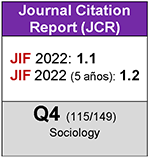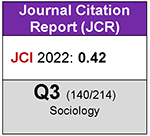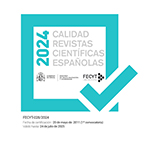Social Tensions in the Photographic Representation of the 1870-1930 Period
DOI:
https://doi.org/10.5477/cis/reis.148.135Keywords:
Visual Anthropology, Social Determination of Meaning, Photography, Family Research, Rural to Urban Migration, Social TensionsAbstract
Before the rural exodus of the 1950s in Italy, a symbolic and reverse
exodus took place. The symbolic capital of modern culture penetrated
into the farming world. Society has particular mechanisms in place to
relieve pressures, thereby also announcing and preparing for social
changes. This paper analyses one of these mechanisms, namely family
photography between the late 19th century and the early 20th century.
Through some singular portraits, we see the ‘dispatcher’ role that
photography played in the interstices of society between psychological,
social, and material realities: a junction of emotions, a mediator between
the rural and urban worlds, a rite of passage that channels drives, and a
yardstick of what society considers to be correct or not.
Downloads
Downloads
Published
How to Cite
Issue
Section
License
Copyright (c) 2024 Revista Española de Investigaciones Sociológicas

This work is licensed under a Creative Commons Attribution-ShareAlike 4.0 International License.
Permite Compartir — copiar y redistribuir el material en cualquier medio o formato, Adaptar — remezclar, transformar y construir a partir del material para cualquier propósito, incluso comercialmente.








